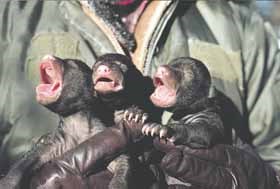Last week, social media in the Yorkton area was abuzz with rumours of a possible bear sighting in the Ravine Ecological Preserve.
Phil de Vos, one of Yorkton's bylaw officers, said it got a little blown out of proportion. What was actually reported was merely fresh scat and tree scratchings.
"It's no big deal," de Vos said. "There's always been bears in the area."
The Parkland area is, in fact, part of the American black bear's traditional range, which at one time covered most of North America. While its preferred environment is the boreal forest to the north, the Parkland's transitional nature between boreal forest and prairie grassland also makes excellent habitat, particularly the numerous valleys and waterways where forage is ample.
Black bears tend to be shy, preferring the dense underbrush of forested areas where berry- and nut-bearing plants are abundant. Like most bears, however, they are scavengers that will-in the tradition of their cartoon cousin Yogi-gladly take advantage of a free lunch hence can be commonly seen visiting garbage dumps.
They can also be a powerful predator in a pinch, but rarely attack humans unprovoked. There has not been a fatal bear encounter in Saskatchewan since May 27, 1983 when Melvin Rudd, a 55-year-old angler was killed while fishing near Nipawin Provincial Park.
It is especially common to find evidence of bear activity near or in cities during the fall. One of the largest and most impressive mammals of Saskatchewan fauna, bears require enormous amounts of food at this time of year and will range widely to get it as they build up fat stores for hibernation.
While it might not be unusual to find bear signs around Yorkton, actual encounters and sightings are rare even for campers if proper food storage and garbage handling methods are observed according a Saskatchewan Ministry of the Environment (MOE) pamphlet.
De Bos said he suspects the animal that left signs in the ecological preserve has probably moved on, but it does not hurt to take precautions when hiking in any natural area.
"The best thing to do is make a lot of noise," he said. "They won't bother you if you don't bother them."
Other tips for avoiding black bear encounters include hiking in groups, avoiding areas of bear food sources and staying alert (a bear seen at a distance can be avoided by giving it a wide berth).
If you do come in close proximity to a bear, the MOE warns to stay calm and not to run under any circumstances. When a bear does encounter a human, its tendency is to evaluate whether it is a threat or food source. The best way to convince it of the latter is to act like prey and an average bear can run twice as fast as an average human. That includes downhill, despite the popular mythology.
Another myth the ministry debunks is that playing dead is a good strategy. This myth stems from grizzly bear lore. Grizzlies are notoriously territorial and aggressive. Showing submissiveness, making yourself small, retreating calmly and even playing dead have been known to convince grizzlies to lose interest.
Black bears, on the other hand, which diverged from a common ancestor of theirs and grizzlies more than five million years ago, are generally non-aggressive and most likely will threaten but not attack. If they do come after you, however, you can bet they have decided you are a meal and you should fight back with everything at your disposal.


.png;w=120;h=80;mode=crop)

